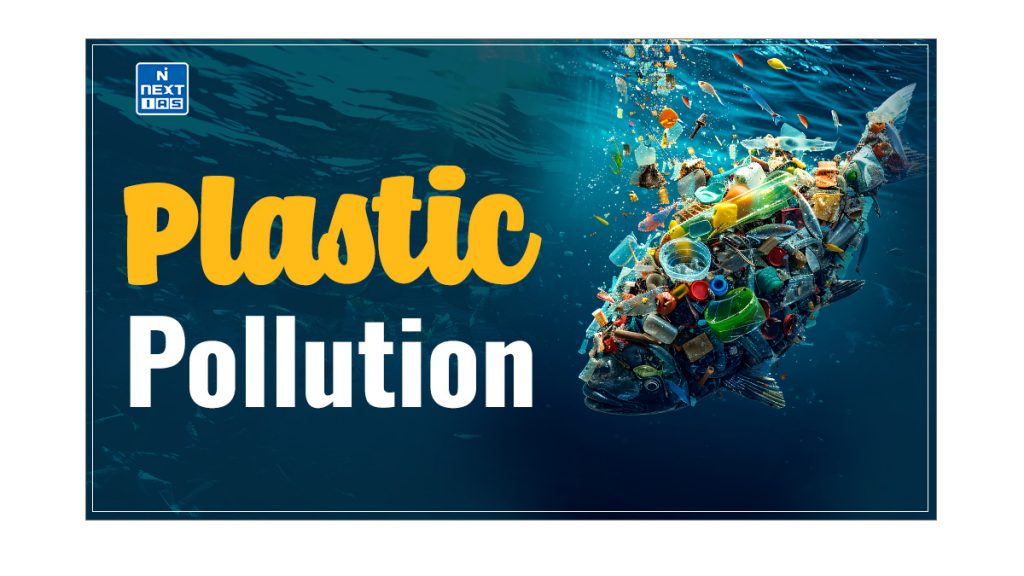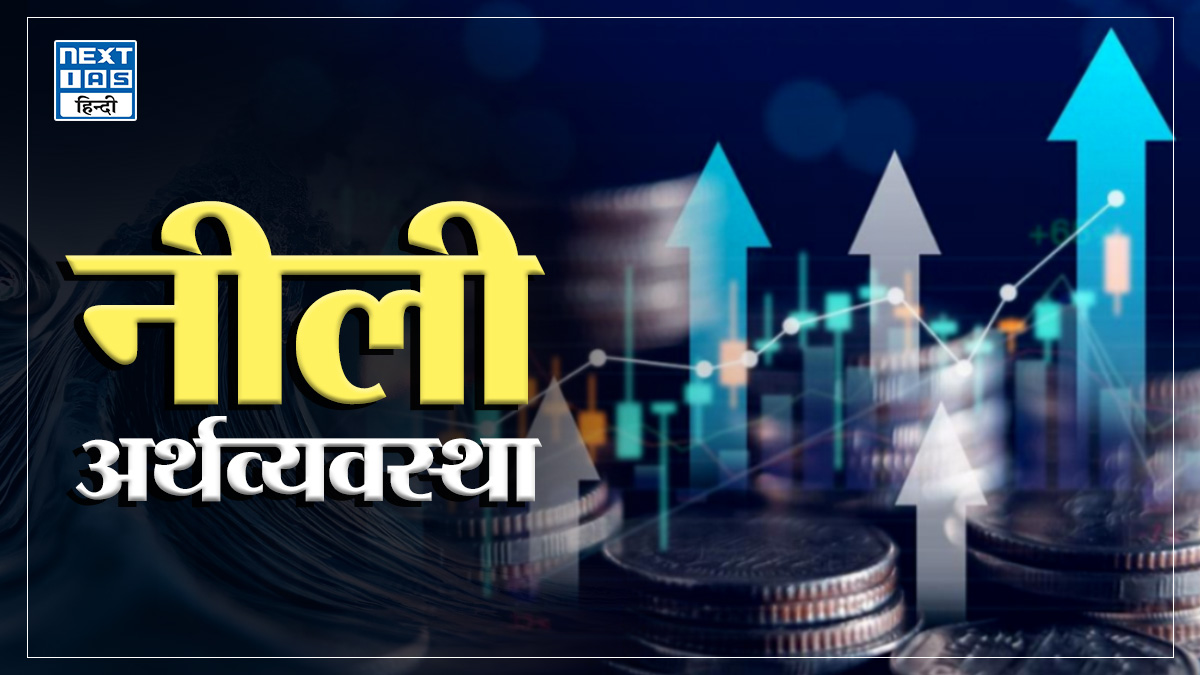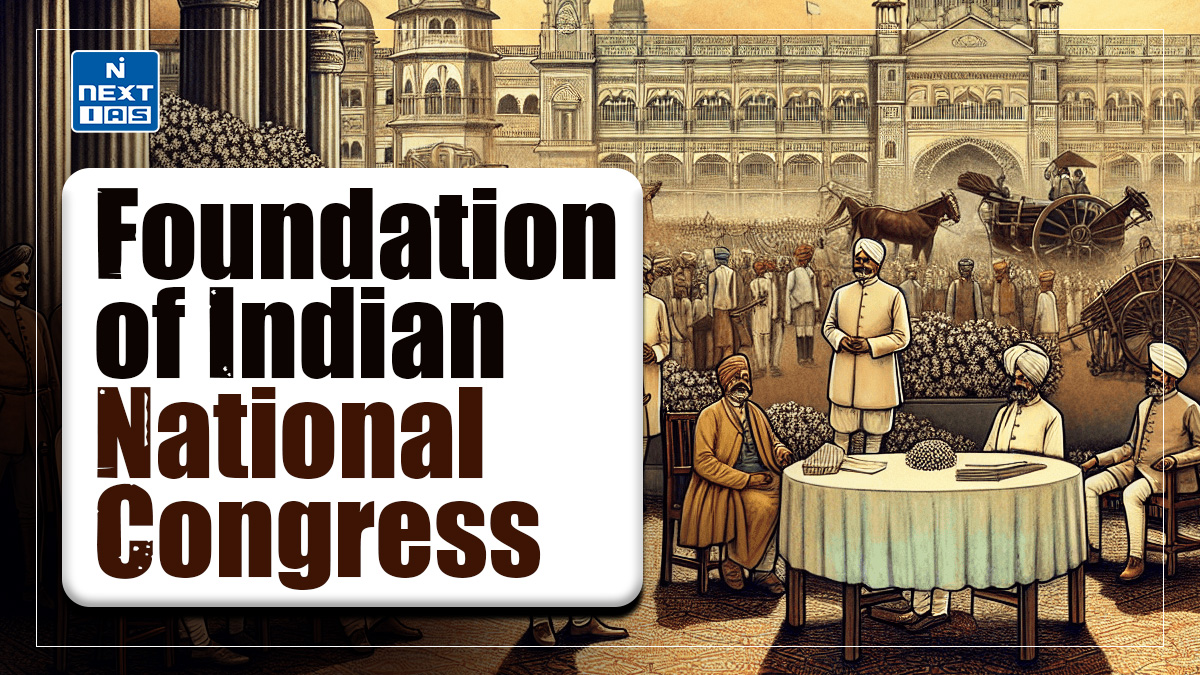
As societies become increasingly industrialised, Plastic Pollution has emerged as a significant environmental issue. It has wide-ranging implications for humans, wildlife, and the environment. This article aims to study in detail Plastic Pollution, its major causes and sources, effects, control measures, and other related aspects.
What is Plastic Pollution?
- Plastic Pollution is the accumulation of man-made plastic products in the environment to the point where they create problems for wildlife, their habitats, and human populations.
- The ill consequences of plastic pollution are aggravated by the non-biodegradable nature or slow degradation of plastic.
- Plastic Pollution is a prominent type of Environmental Pollution.
| What is Environmental Pollution? – Environmental Pollution refers to the introduction of harmful materials into the environment. – In other words, environmental pollution is the contamination of the physical and biological components of the environment to such an extent that normal environmental processes are adversely affected. – Environmental pollution can be categorised into several types based on the nature of the pollutants and the media they affect, including Air Pollution, Soil Pollution, Water Pollution, etc. Read our detailed articles on Environmental Pollution, Soil Pollution, Water Pollution, Air Pollution, Noise Pollution, Thermal Pollution, Marine Pollution, and Nuclear Pollution. |
Sources of Plastic Pollution
The sources of Plastic Pollution are as follows:
| Marine | Land (Terrestrial) |
| – Direct: dumping of plastic debris into the oceans – Indirect: plastic debris washed out from land to marine environment | – Plastic bags from shopping – Plastic toys – Pet bottles used for feeding or administrating medicines – Use of plastic disposables – Poor disposal of plastic waste – Failure to recycle plastic |
Impacts of Plastic Pollution
Multifarious impacts of plastic pollution can be seen as follows:
- On Marine Ecosystem
- Once plastic settles in sediments, it can exist there for centuries.
- The accumulation of plastic on the seafloor can limit the gas exchange between the overlying water and the pore water.
- This affects the functioning of the ecosystem at the benthic level.
- The ingestion of plastics by seabirds, fish, etc.
- Entanglement in plastic debris, especially in discarded fishing gear, is a very serious threat to marine animals.
- The microbeads can enter into the food chain in the marine ecosystem.
- Drifting plastic debris can bring with them alien species, which can have negative impacts on marine ecosystems.
- On Terrestrial Ecosystem
- Affects Human Health: Plastics comprise carcinogenic petrochemicals that affect human health.
- Threat to Animal Health: Plastic waste is often ingested by city stray animals, which may lead to suffocation and other harmful effects.
- Air Pollution: Burning of plastic causes air pollution.
- Blocks the Drainage: This is one of the causes of urban flooding.
- Lack of Tourism due to Land Pollution: Plastic debris reduces the aesthetic value of a place.
- Degrades the quality of land and thus affects agriculture.
- Groundwater Pollution.
Effects of Plastic Pollution
Plastic pollution has numerous harmful effects on the environment, wildlife, and human health:
- Marine life impact: Millions of marine animals are harmed or killed each year by ingesting plastic or becoming entangled in it.
- Ecosystem damage: Plastics take hundreds of years to decompose, disrupting ecosystems and releasing toxic chemicals into soil and water, contributing plastic pollution.
- Human health risks: Microplastics have been found in food, water, and even the air, potentially leading to health issues such as hormonal imbalances and respiratory problems.
- Economic costs: Cleaning up plastic pollution and the loss of biodiversity has significant economic implications for industries such as tourism and fishing.
Measures Taken to Curb Plastic Pollution
The measures taken to curb the plastic pollution can be seen as follows:
- The Plastic Waste Management Rules, 2016 and Plastic Waste Management Rules, 2022 aim to curb the generation of plastic waste and hence reduce plastic pollution.
- Plastic Waste Management (Amendment) Rules, 2022, has introduced the guidelines on Extended Producer Responsibility (EPR) for plastic packaging.
- India is a signatory to MARPOL (International Convention on Prevention of Marine Pollution).
- The “India Plastic Challenge – Hackathon” has been launched as a unique competition calling upon start-ups /entrepreneurs and students of Higher Education Institutions (HEIs) to develop innovative solutions to mitigate plastic pollution and develop alternatives to single-use plastics.
- Prakriti & Green Initiatives for Effective Plastic Waste Management.
- The Union Ministry of Environment has launched Mascot ‘Prakriti’ to spread awareness about small changes that can be sustainably adopted in the lifestyle for a better environment for plastic pollution.
- Other green initiatives for plastic waste management causing plastic pollution include:
- Swachh Bharat Mission
- India Plastics Pact
- Project REPLAN
- Un-Plastic Collective
- GoLitter Partnerships Project
- National Dashboard on Elimination of Single-Use Plastic and Plastic Waste Management,
- Extended Producer Responsibility (EPR) Portal for Plastic Packaging,
- Mobile App for Single Use Plastics Grievance Redressal,
- Monitoring module for SUP,
- Industrial production of Graphene from Waste Plastic, etc.
Plastic Pollution Control Measures
The plastic pollution control measures are as follows:
- Find Alternative to Plastics: The use of jute bags and paper bags should be promoted wherever possible.
- Making Use of Reusable Water Bottles: Using disposable water bottles is a major cause of plastic pollution as they are thrown away after use.
- Proper Disposal Practices: This prevents several problems like drainage blockage and air pollution.
- Cultivating a culture of being responsible goes a long way in reducing the effects of pollution.
- Recycling: Plastic recycling is actually one of the best ways to ensure that unnecessary waste materials are not loaded into the environment.
- Government Policies: The Government can play its role by banning the manufacture of low thickness plastic bags and putting in place policies that promote a clean environment.
- Community Education: Educating people about the effects of plastic pollution and ways in which it can be prevented or controlled will be a step in the right direction.
Conclusion
In conclusion, plastic pollution is a pressing environmental challenge with far-reaching consequences. By implementing effective solutions, including reducing plastic consumption, improving waste management, and promoting sustainable alternatives, we can mitigate the impacts of plastic pollution and protect our planet for future generations.
Plastic Waste
- Plastic waste constitutes a significant proportion of the total municipal solid waste (MSW).
- Due to the convenience and the relatively low per-unit cost, plastic has emerged as the first choice for consumers as well as manufacturers.
- However, the environmental cost of plastic is very high as it is non-biodegradable in nature and results in hazards like choking of rain, emission of toxic gases, or accidental ingestion.
- The plastic waste can be divided into two major categories:
Thermoplastics
- These are the substances whose properties can easily be modified by heating or cooling.
- These families of organic polymers are easy to recycle.
- Some of these polymers are poly-ethylene (LDPE/HDPE), Poly Vinyl Chloride (PVC), Poly-amide etc.
Thermo-Setting Plastic
- These are the plastic substances whose physical and chemical properties are irreversibly changed during the manufacturing process often in the presence of a catalyst.
- These plastics are not suitable for recycling.
- Some of these substances are unsaturated polyesters, synthetic resins, etc.
| Various studies have reported that thermoplastic constitutes of almost 80 % of the total plastic waste generated in India, while the rest 20% is contributed by the Thermo-setting plastics. |
Types of Plastic Waste
Plastic waste can be broadly classified into several types based on its composition and usage.
- Single-use plastics, such as plastic bags, straws, and packaging materials, are designed for short-term use and are a major contributor to plastic pollution.
- Microplastics, tiny plastic particles less than 5mm in size, result from the breakdown of larger plastics or are directly released from products like cosmetics.
- Hard plastics include durable items like bottles, containers, and household goods, which take longer to degrade.
- Thermoset plastics, used in electronics and automotive parts, cannot be remoulded or recycled easily.
- In contrast, biodegradable plastics are designed to break down more quickly but often still require specific conditions to decompose properly.
Plastic Waste Management (Amendment) Rules, 2022
- Guidelines on EPR: The guidelines on EPR(Extended Producer Responsibility) coupled with the prohibition of identified single-use plastic items, which have low utility and high littering potential, with effect from 1st July 2022.
- Classification of Plastics: The new rules classify plastics into four categories:
- Category 1 will include rigid plastic packaging
- Category 2 will include flexible plastic packaging of single layer or multilayer (more than one layer with different types of plastic), plastic sheets and covers made of plastic sheet, carry bags, plastic sachet or pouches.
- Category 3 will include Multi-layered plastic packaging (at least one layer of plastic and at least one layer of material other than plastic)
- Category 4 will include plastic sheet or like used for packaging as well as carry bags made of compostable plastics fall.
- Recycling and Reusing: The new regulations mandate recycling and reusing a certain percentage of plastic produced by manufacturers, importers and brand owners.
- Details of Recycling Certificates: According to the new rules, the producers, importers and brand-owners shall have to provide the details of recycling certificates only from registered recyclers along with the details of quantity sent for end-of-life disposal, by June 30 of next financial year while filing annual returns on the online portal.
- Centralised Online Portal: The government has also called for establishing a centralised online portal by the Central Pollution Control Board (CPCB) for the registration as well as filing of annual returns by producers, importers and brand-owners, plastic waste processors of plastic packaging waste by March 31.
- The centralised portal would act as the single point data repository with respect to orders and guidelines related to implementation of EPR for plastic packaging under Plastic Waste Management Rule, 2016.
- Environmental Compensation: It shall be levied based upon the polluter pays principle, with respect to non-fulfilment of EPR targets by producers, importers and brand owners, for the purpose of protecting and improving the quality of the environment and preventing, controlling and abating environment pollution.
- The funds collected shall be utilized for the collection, recycling and end-of-life disposal of uncollected plastic waste in an environmentally sound manner.
- Setting Up of a Committee: The government has announced the setting up of a committee, which shall be constituted by the CPCB under the chairpersonship of the CPCB chairman, to recommend measures to the environment ministry for effective implementation of EPR, including amendments to Extended Producer Responsibility (EPR) guidelines.
Extended Producer Responsibility (EPR)
- EPR(Extended Producer Responsibility) refers to a producer’s responsibility to manage a product environmentally soundly until its end of life.
- EPR(Extended Producer Responsibility) holds producers accountable for the environmental impacts of their products throughout their life cycle, encouraging better waste management and eco-friendly product design.
- EPR(Extended Producer Responsibility) applies to various types of waste, including e-waste, plastic waste, and battery waste.
- India first introduced EPR(Extended Producer Responsibility) in its e-waste rules 2011.
Frequently Asked Questions (FAQs)
What is Plastic Pollution?
Plastic pollution refers to the accumulation of plastic materials in the environment, adversely affecting wildlife, marine life, and human ecosystems. It includes a variety of plastic waste, such as bags, bottles, and microplastics, that do not biodegrade easily, causing long-term damage to the planet.
How can we reduce Plastic Pollution?
We can reduce plastic pollution by minimising the use of single-use plastics, promoting recycling and reuse, switching to biodegradable alternatives, spreading awareness, and supporting government policies that ban harmful plastics and encourage sustainable practices.
How to prevent Plastic Pollution?
Prevent plastic pollution by avoiding single-use plastics, opting for eco-friendly products, recycling waste properly, and educating others on the importance of sustainable habits.





